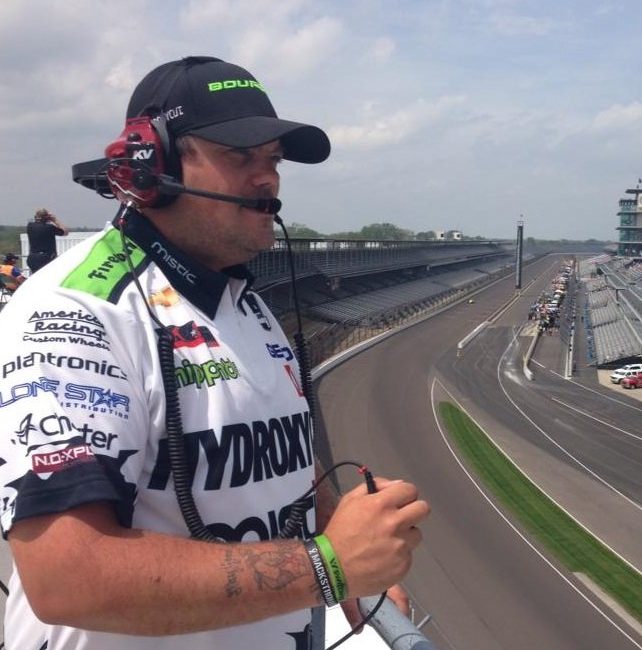
On the Spot: Views of Indianapolis Motor Speedway
People often ask me, “What’s the best place to sit at the Indianapolis Motor Speedway?” And I want to tell them. I do. The problem is, they can’t sit there. Because the absolute best seat in the house is one where fans are not allowed: the spotter’s stand at Turn 1.
I visited the Turn 1 spotter’s stand, an open platform littered with folding chairs, on Thursday. High up in Stand E—95 steps, to be precise—it offers an unparalleled view of IMS. You can see cars—specks, really—emerge from Turn 4, hurtle down the main straight past the starter’s platform, set up for Turn 1, arc the turn, navigate the Short Chute between Turns 1 and 2, and disappear into Turn 2. That, and all the activity in pit lane.
Really, you can’t beat it.
My host on the stand is Chris Wheeler. He’s a spotter for KV Racing’s Sebastien Bourdais, who pilots the Number 11 Hydroxycut/Mistic eCigs machine. Wheeler’s job is to serve as a second pair of eyes. “At the speeds he travels,” Wheeler says of Bourdais, “he really doesn’t have time to look in the mirror.” Wheeler communicates what he sees via radio signal, which is transmitted to a speaker inside Bourdais’s helmet. He is the voice in Bourdais’s head.
Wheeler, who has been a spotter for nearly 10 years, pays special attention to Bourdais’s position relative to any cars next to or immediately behind him. “Inside,” he says if a car is to Bourdais’s left on the oval track. Or, “Outside,” if there’s a car to his right. If Bourdais pulls away, Wheeler says, “Clear.” If another car is coming up behind him, Wheeler tells Bourdais how many car lengths back it is.
Spotting is no small job. “You screw up,” says Wheeler, “it’s big.”
Worst-case scenario, someone—your driver, someone else’s driver, a safety worker, or a fan in the stands—gets killed. A slightly better scenario is someone getting maimed but surviving. Even if everyone walks away without a scratch, there’s still the damage to the car(s) to consider. That damage takes a lot of time—and money—to repair. “There’s a lot riding on that one simple statement, ‘Clear,’” says Wheeler.
For all this to work, the driver must trust his spotter completely—and Bourdais does. “He knows what to expect from me, and I know what to expect from him,” says Bourdais. No doubt, this trust exists at least in part due to the amount of time Wheeler spends with Bourdais both on and off the track. Last summer, Wheeler even joined Bourdais and his family in their RV for four weeks of the IndyCar season.
Of course, Wheeler isn’t the only spotter in IndyCar. His father also holds that job. So do such former Indianapolis 500 drivers as Roger Yasukawa (who spots for Takuma Sato), Pancho Carter (who spots for James Davison), and the great Rick Mears (who spots for Helio Castroneves). “They’re on a different level because they’ve actually done it,” observed, adding, “if Rick Mears tells you how to ride a bicycle, you better listen.”
But Wheeler (who raced go-karts into his early 20s) is no slouch. “I’ve been around the sport since I was 6,” he says. “I’ve gotten to learn from some of the best.”





